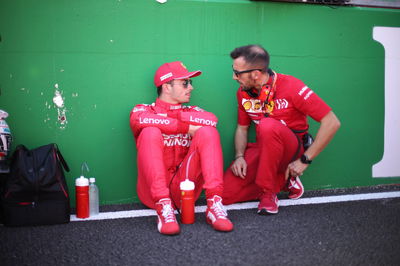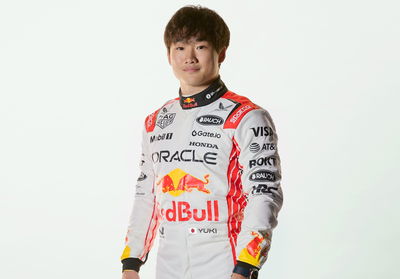F1 Race Analysis: Could Hamilton have one-stopped to victory?
The typhoon-induced shake-up of the Formula 1 race weekend at Suzuka left teams and drivers largely in the dark as to the pecking order heading into Sunday’s running, creating the possibility for some surprises.
Ferrari immediately sprung one in qualifying, sweeping to a front-row lockout that had seemed far out of reach on Friday in practice, leaving both pole-sitter Sebastian Vettel and Charles Leclerc unsure how they had managed to topple the Mercedes drivers.
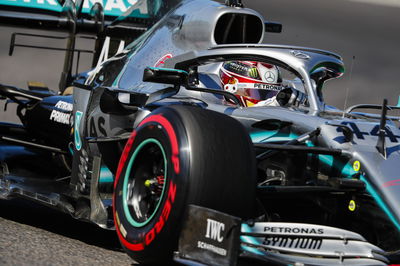
The typhoon-induced shake-up of the Formula 1 race weekend at Suzuka left teams and drivers largely in the dark as to the pecking order heading into Sunday’s running, creating the possibility for some surprises.
Ferrari immediately sprung one in qualifying, sweeping to a front-row lockout that had seemed far out of reach on Friday in practice, leaving both pole-sitter Sebastian Vettel and Charles Leclerc unsure how they had managed to topple the Mercedes drivers.
But the tables turned quickly in the race. A jump start from Vettel – even if not technically – caused him to drop back, with Leclerc claiming his teammate’s early move had distracted him before making a poor start himself. Things got worse for Leclerc moments later when he clashed with Max Verstappen at Turn 1, leaving him with damage that would make his race about recovery.
It had all played into Mercedes’ hands, but in particular those of Valtteri Bottas. A lightning start saw him sweep past the slow Ferraris and into the lead at Turn 1, giving him the freedom to build a lead in the opening stint. Lewis Hamilton didn’t make the best of starts, narrowly avoiding contact with Carlos Sainz into the Esses, so did well to move into third place behind Bottas and Vettel in the early stages.
The lack of representative running on Friday meant teams were unsure how strategy would play out. Pirelli’s pre-race prediction was that a one-stop strategy going from Softs to Mediums was the quickest way home, albeit only just ahead of a two-stop (Soft-Soft-Medium). Ferrari committed Vettel to a two-stop early, the German driver having struggled towards the end of his stint, allowing Bottas to build his lead to over five seconds and Hamilton to close to within a second. Despite not struggling as much, Mercedes reacted immediately with Bottas to cover off Vettel, bringing him in on Lap 17, but fitted Mediums to keep the door open for a one-stop.
It was in this phase of the race that the high degradation levels became so clear. With Leclerc out of contention following his clash with Verstappen, Mercedes had the chance to split strategies, giving them the option to consider a one-stop for Hamilton. “When you’re in the lead, you need to protect your position. When you’re third, you can take more risks and more chances,” said Mercedes F1 chief Toto Wolff after the race.
But those risks appeared to quickly backfire when Bottas began setting times three seconds per lap faster than Hamilton’s. The team had little choice but to can the idea of extending Hamilton’s Soft tyre stint, bringing him in on Lap 21. While that had been the original plan, Hamilton had no idea the gap to his teammate would be so large.
“What is the surprise is that every time you come out, you end up behind a car which is frustrating because I can’t see that,” Hamilton said. “When I come out I realise that I’ve lost another 10 seconds. If they said I would come out 22 seconds behind Valtteri I would have said no. There will be some discussions I’m sure when we get back.”
Hamilton called the strategy a “f**k up” over team radio before getting his head down and setting off in pursuit of Vettel. The Ferrari may have been running on Softs – theoretically the faster tyre – but Hamilton was able to make use of the five-lap delta between their stops to cut the gap with his fresh rubber. He halved the initial 10-second gap to Vettel before the Ferrari driver’s second stop, and sat just 13 seconds shy of Bottas by the time the race leader came in for his second stop.
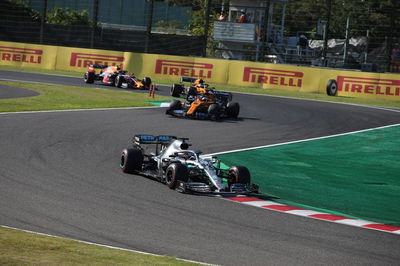
Hamilton was already focusing on a two-stop strategy at this point, but his pace on the Mediums showed few signs of dropping off. He was keeping the gap to Bottas largely stable at around nine seconds initially, continuing to lap in the mid-1m32s range. Bottas was failing to make the kind of inroads he had on the last stint, prompting the Finn to double-check with the Mercedes pit wall that Hamilton would be coming in a second time. Hamilton admitted after the race that staying out did cross his mind, although he would never have gone against the team’s wishes.
“Naturally while I was never going to stay out, I thought about staying out, but by that time I had already pushed so much to close the gap to Seb,” Hamilton said. “Valtteri had a very good gap in the first stint and he didn’t have to stop early as he had a good enough gap to stop when Seb tried the undercut, but it is always an afterthought. The first car gets priority, which is always how we’ve had it but we could have scored more collectively as a team.”
Could Hamilton have made it the extra 10 laps required to get home on one-stop? He reckons so – had it not been for his push early in the second stint to try and catch Vettel.
“With better guidance, I think I probably could have,” Hamilton said. “They said when they put the tyre on they would be going to a two-stop because the degradation is higher. Just the direction I was given in terms of having to close the gap to Seb, every time I was having to close this gap, I was using the tyres up a lot.
“In how I was utilising them and using them, there was no way I was going to make it. Maybe if I had from the beginning said to them just eke it out, just see if you can manage it, I could have driven differently to help them to the end.”
Wolff conceded that it was tight on deciding whether or not to bring Hamilton in – but expected Bottas to catch, at which point they would have been asked to swap positions. Making the Mediums last 33 laps home would have been a mighty task that may have proved impossible against a charging Bottas.
“Pitting Lewis at the end was a 50-50 call,” Wolff said. “We could have left him out and tried to ask the drivers to change position to give the result back and maybe protect it against Sebastian.
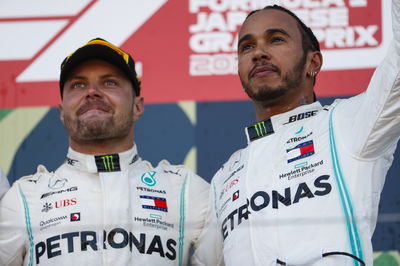
“But on the other side, maybe [it was] not protecting against Sebastian, so pitting and giving him a new set of tyres was the decision that was being taken. At that stage, it felt like the right decision.”
And it was close to being the right call. Hamilton wasted little time in making up the five-second gap to Vettel, latching onto the rear of his car to gain DRS for the final eight laps. It took some canny defensive work from Vettel to keep the Mercedes back.
“We have an advantage on the straight line, we tried to play that and it worked,” Vettel explained. “I tried to slow down a little bit, save the tyres in the place I could afford and speed up in the places where it was leading onto straights where he could have been a threat.”
Staying out for a one-stop would not have scored Hamilton victory – but it could have given him a better shot at second place, especially as he was putting more time on Vettel through the final stages of his Medium-tyre stint. The 18-second gap would have been tough to make up given how well the Mercedes was running on the Mediums.
Alas, it proves that even in Mercedes’ finest hour, when it assured it would eclipse Ferrari’s record for consecutive title doubles, there is still room for improvement. And you can be certain the team will work tirelessly to learn from this.
